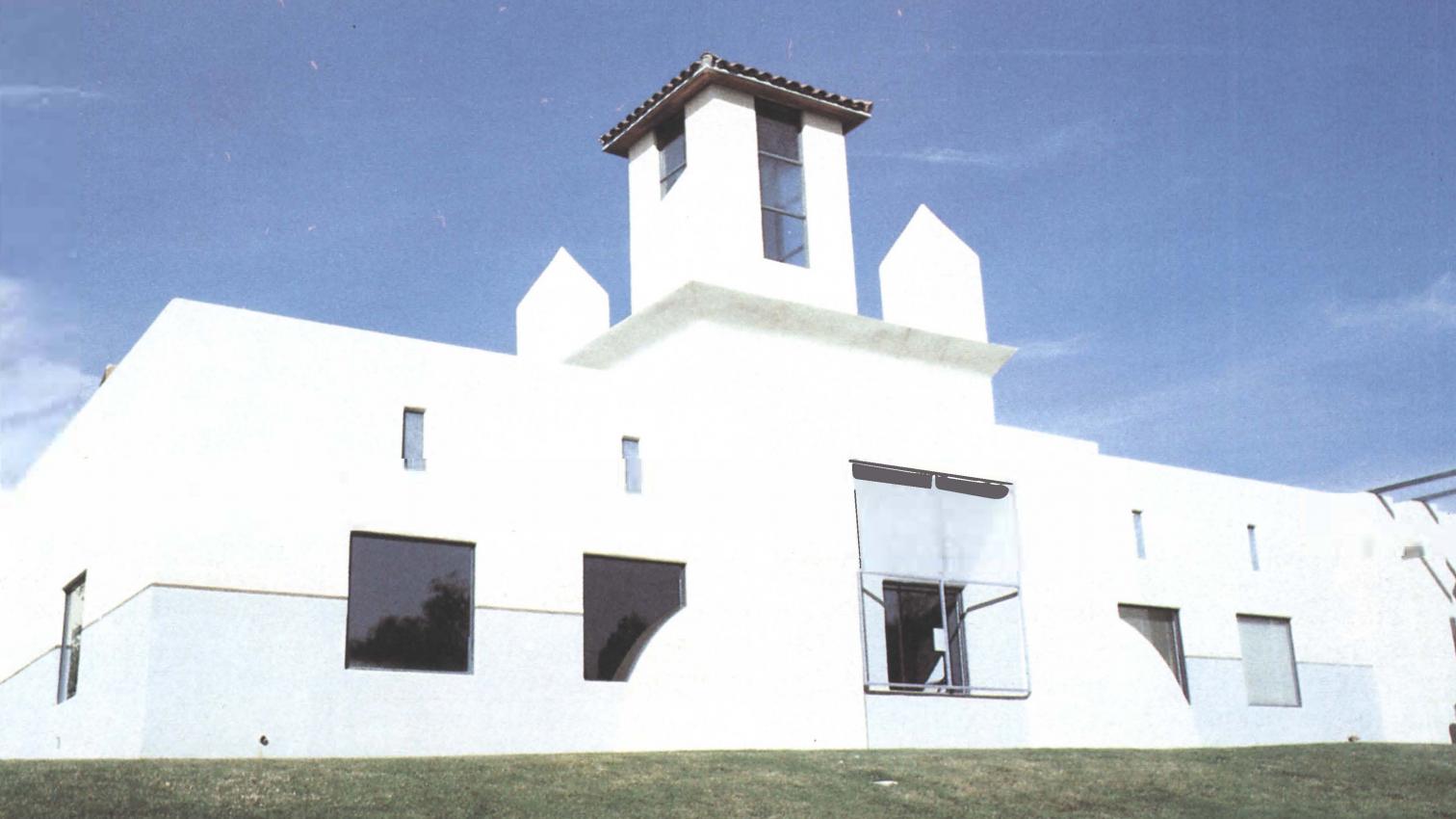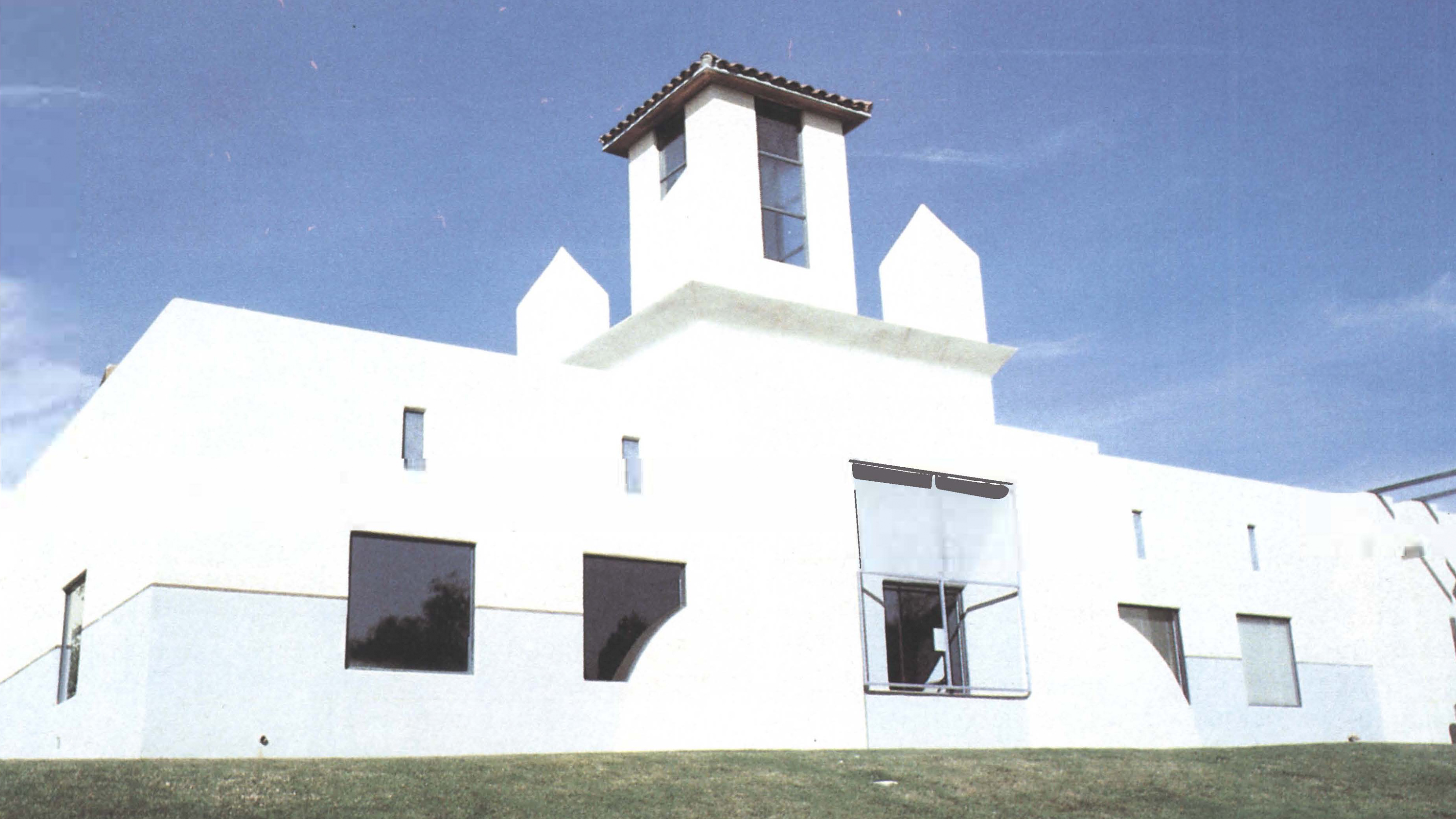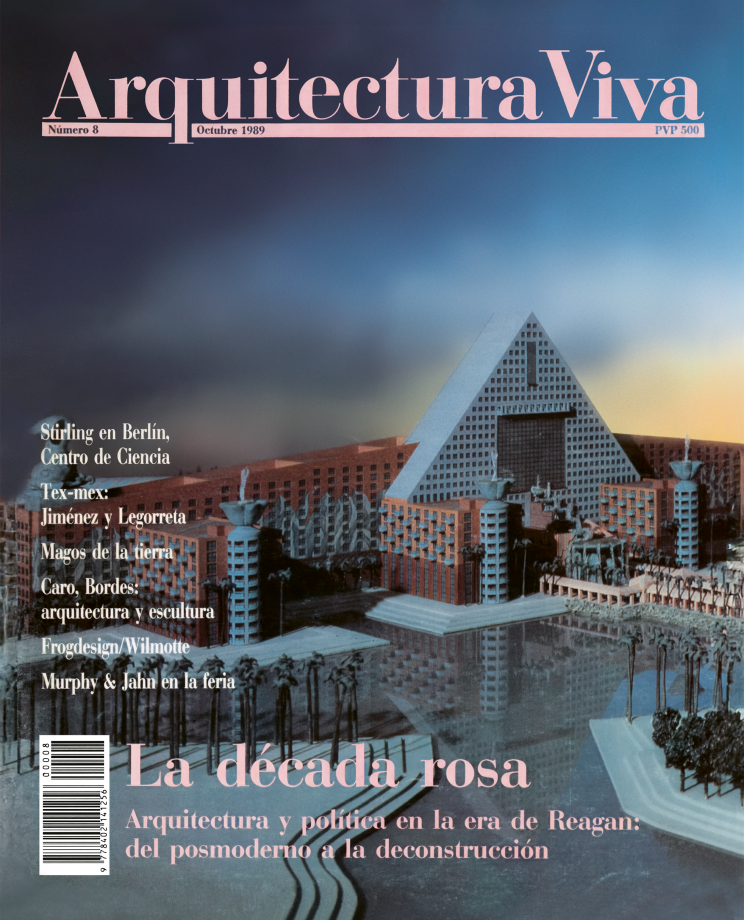Architecture and Politics in the Reagan Era
From the Postmodern to Deconstruction

Michael Graves, San Juan Capistrano Library, California, 1980
"Postmodern architecture is the architecture of Reaganism." Among many leftist architects and critics, this kind of statement has become a cliché. Pseudo-historical nostalgia, invented traditions, courting a clientele of new wealth, populist rhetoric that often sounds more paternalistic than democratic, and the abandonment of any social vision —all these features seem to be somehow related to the shift that American politics has undergone. On the other hand, neoconservative critics Daniel Bell and Hilton Kramer have vehemently attacked the postmodern trend from their own standpoint, arguing that it undermines social stability and fundamental spiritual values. This attack from such divergent fronts immediately reveals the difficulties of establishing a simple equivalence between postmodernism and any specific political stance. The relationship between style and ideology has always been complex, but in the case of the postmodern movement, it is shaped, first, by the confusion surrounding what the term even means, and second, by the increasingly accelerated cycle of consumption that seems to alter its political meaning ever more rapidly —thus raising even more fundamental questions about the nature of architecture’s political power...[+]






